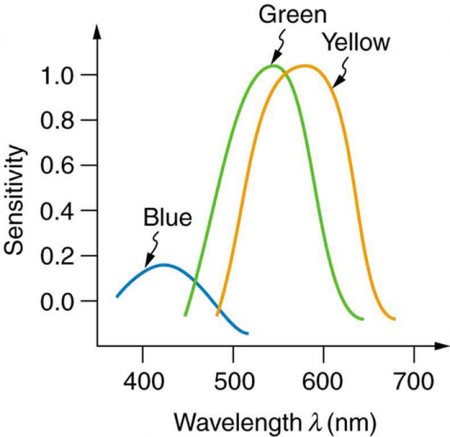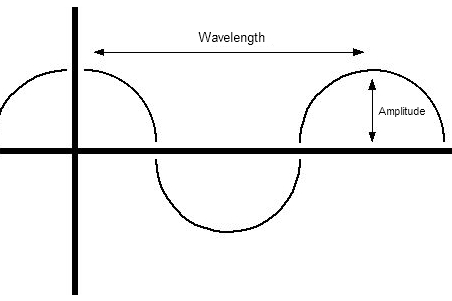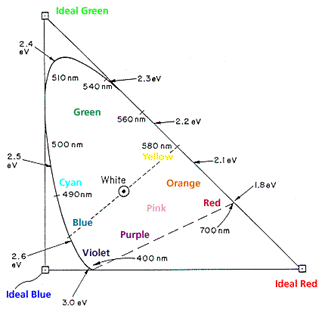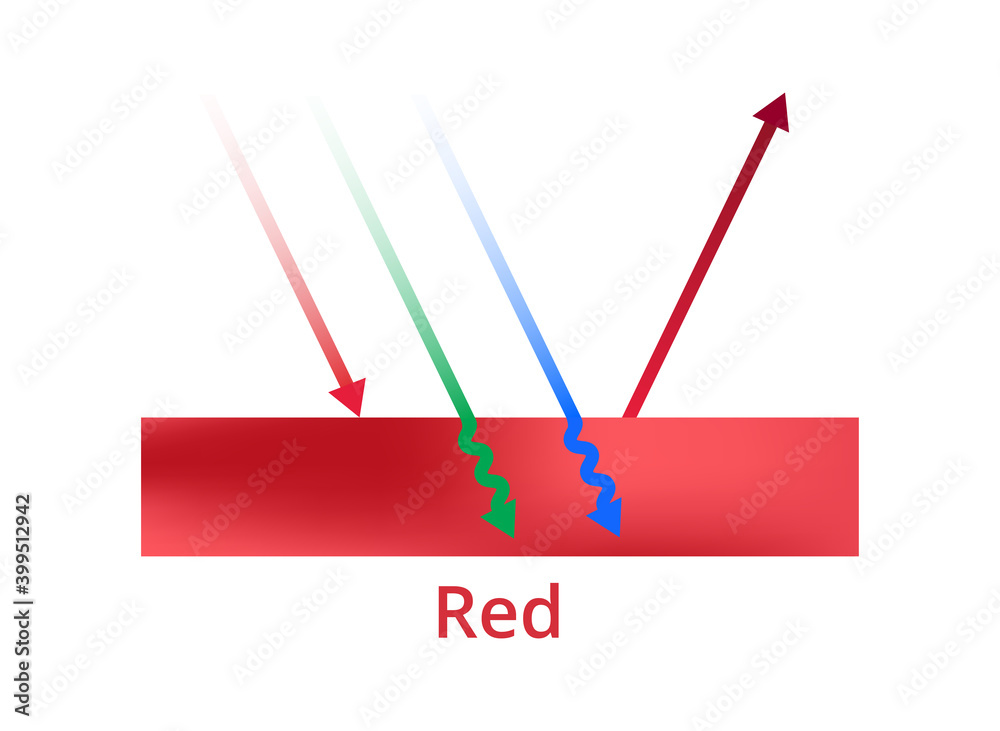how do we see color physics
The primary colors of light are red green and blue which match up with the red green and blue-sensitve cone cells in the retinas of our eyes. When you see objects you just receives light reflected or refracted from those objects which is perceived by your eye as color.

Color And Color Vision Physics Course Hero
There are three primary colours in light.

. Eye contains three types cells cones redblue green these are. It is responsible for decoding the electrical information coming from the retina. We can perceive colors in things like crayons and flowers since they reflect and absorb the rays of light.
Brown is a mixture of the different primary colors. A type of photoreceptor cell in the retina which helps us to see different colors. The human brain and the human eye cooperatively translate light into color.
The violet line leads to three readings on the red green and blue cones. The Vision Center is located in the back part of your brain the occipital cortex or lobe. Blue light is scattered more than the other.
Light in these colours can be added together to make the secondary colours magenta cyan and yellow. A type of photoreceptor cell in the retina which helps us to see in low light. Light receptors are present in the eye which transmits the messages to the brain.
Brain identifies red and green receptors to both be. Red green and blue. Sunlight reaches Earths atmosphere and is scattered in all directions by all the gases and particles in the air.
The way we see colors isnt very straightforward. This dark yellow smeared over a wide portion of the spectrum is perceived as brown. Light receptors within the eye transmit messages to the brain which produces the familiar.
See second figure Fig. White light from the Sun is a mixture of colours each with a different frequency. The sensitivity of the eyes receptors to a light wavelength is responsible for color vision.
The physics of color perception involves energy wavelengths reflections and signals zapping back and forth in our brains. We see objects of different colors because light reflects. We perceive only the reflected colors.
I am not at all an expert in the biophysics of the eye but my guess is the following. How do we see colors physics. The Short Answer.
What are light and colour. Colour also spelled color the aspect of any object that may be described in terms of hue lightness and saturation. A blue object reflects blue light but absorbs all other waves.
A green object reflects green light. These light receptors are. You can use a prism to split or disperse white light into a spectrum of colours.
In physics colour is associated specifically with.
Water And The Absorption Of Color

What Is Colour In Physics Colour Perception Colour Addition Colour Blindness

Chapter 1 The Physics Of Light And Color
Physics Tutorial Color Subtraction

Color Mixing Ucla Physics Astronomy

Visible Light Color Filters That Subtract Just One Color Physics Stack Exchange

The Physics Of Pink Why It Isn T In The Rainbow A Schooner Of Science

What Makes Things Coloured The Physics Behind It

Physics Free Full Text Color Transparency And Light Front Holographic Qcd Html

Physical Science Color By Number Physics Bundle By Charesse Clark

Optical Society Of America Exploring The Science Of Light Teachers And Parents Articles The Composition Of Color

How We See In Color 8th Grade Science

Schrodinger Was Wrong New Research Overturns 100 Year Old Understanding Of Color Perception R Physics

Physics Light And Waves Flashcards Quizlet

Physics Science Toys Triple Prism Glass Reflecting Color Light Spectrum Learning Educational Toys For Children School Teaching Science Aliexpress

Colours In Physics Examples Answers Activities Experiment Videos

The Physics Of Color Isaac Newton Did You Know Pepperjack Interiors

Vector Scientific Illustration Of Light Reflection Red Color Red Surface The Red Color Is Reflected Green And Blue Colors Are Absorbed Visible Spectrum Light Infographic Physics Printing Stock Vector Adobe Stock
